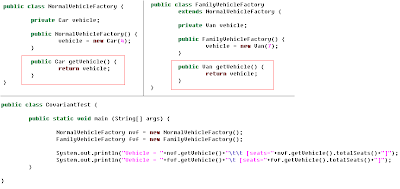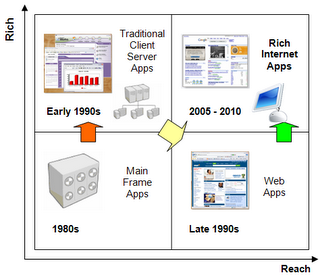3 Players
Microsoft, Sun, Google
2 Visions Microsoft – A Desktop (Computer) in every home.
Sun Microsystems – Network is the Computer
Microsoft’s vision of ‘A Desktop in every home’ has helped the spread of internet and its economy which is considered around $100 billion dollars (The Search by John Battelle). This indirectly helped to realize the vision of Sun Microsystems ‘Network is the computer’. Sun Microsystem's Java platform, fast tracked the internet software development (Web site / portal development using Java technologies like servlets, enterprise java beans etc) which helped the normal users to get more value out of internet and letting it being part of their daily life.
Most of the computing for the common person revolves around the web browser and it became the interface to giant network (or should we say the Computer) called internet.
What did Google do over here?
Google not only made internet a utility for the common person, it became an infrastructure for the small-scale business industries, which revolves around Google Search. Google’s $3 billion dollar Advertisement revenue in the last 3 years shows a new business model where a 3000 strong Google engineering team busy building software’s (Gmail with 2.5+ GB storage with POP3 access, Google Earth, Google Maps, Google RSS Reader, Google Desktop Search) to give away free (The Google Future by George F Colony – CEO Forrester). This new business model is credited or known as Google’s model however the actual credit goes to Bill Gross the Chairman and Founder of the Idea Labs.
1 Destination
An inter-connected digital world where all the electronic devices are connected (computers, cars, cell phones, house hold appliances, RFID enabled passports etc) together creating a single giant computer ('The Network is the computer').
Owned by everyone and owned by none!
Two great visions from two rival companies merged into a single destination.
Here is the role for the fourth player, the player who focuses on Security and its vision.
‘Secure every digital bit’
A bit which is getting transferred on the wire or getting stored in any storage devices (hard disks / memory sticks / DVD's etc) or processed inside any CPU’s (Central Processing Unit of any devices – like computers, cell phones, cars etc). 
Here is an interesting thing I found about what Google could do (potentially) in the future from New York Times :-)
By RANDY SIEGEL (the president and publisher of Parade Publications).
Google 2084 - Copyright 2005 The New York Times Company
http://www.nytimes.com/imagepages/2005/10/10/opinion/1010opart.html













